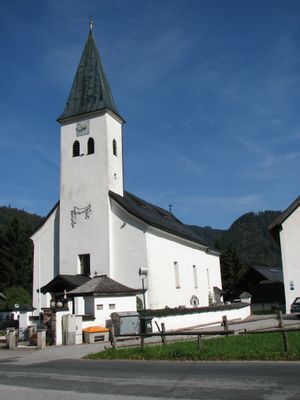Nationalpark Berchtesgaden
Bavaria's playground of alpine highs and emerald depths.Alpine mountains and clear lakes define this German national park. Rare golden eagles soar above hiking trails, while marmots roam near Lake Königssee and the historic Eagle's Nest.
Nationalpark Berchtesgaden, Germany’s sole alpine national park, covers 210 square kilometers of the Bavarian Alps bordering Austria. The Watzmann mountain range dominates the skyline with its sharp ridges, while Königssee and Obersee lakes reflect the surrounding cliffs. You can explore 260 kilometers of marked paths that wind past rock-dwelling marmots, nesting sites for large birds of prey, and the distinctive onion-domed Church of St. Bartholomew. Since its creation in 1978, the park has focused on protecting natural cycles, letting forests and wildlife develop without major disruptions. Silent electric ferries connect visitors to lakeside trails, and hiking options range from flat valley walks to steep ascents requiring climbing gear.
Trails and Hiking Options
The park uses colored markers to indicate trail difficulty: blue for gentle paths, red for moderate inclines, and black for expert routes. Blue trails like the Hintersee Lake loop take about an hour on flat gravel paths suitable for strollers. Red routes such as the Königsbachalm ascent involve uneven terrain and occasional metal cables for handholds. Black-marked paths like the Watzmann East Face approach require helmets, proper boots, and experience with exposed rock sections. During winter, many trails become accessible only with snowshoes or skis, and daily avalanche bulletins dictate safe routes.
Königssee Lake and Boat Tours
Königssee stretches 7.7 kilometers between vertical rock walls, its bright green waters reachable via electric ferries from Schönau am Könysssee. Boats make two stops: first at St. Bartholomew’s Church, a 12th-century pilgrimage site with red roofs, then at Salet dock. During the 35-minute ride to Salet, crew members demonstrate the lake’s famous echo by playing a flügelhorn near the Echo Wall cliff. From Salet, a 30-minute walk leads to Obersee, a smaller lake where Germany’s highest waterfall drops 470 meters from the Röthbachfall. The Jennerbahn cablecar near Schönau lifts visitors to 1,874 meters for views spanning the park’s peaks and Salzburg’s cityscape.
Wildlife Guidelines and Park Rules
Large birds nest on cliff ledges, and goat-like ibex often appear on high meadows during summer mornings. Keep to designated trails to protect plants and avoid trampling eggs of ground-nesting birds. Bringing dogs is allowed only if they stay on a leash at all times. Swimming with inflatable toys or boards is forbidden in Königssee to maintain water clarity. You must take all garbage with you, as the park provides few trash cans to prevent attracting animals.
Getting There and Visitor Resources
Frequent buses connect Berchtesgaden’s train station to park entrances via lines 839, 841, and 843. Paid parking areas serve major trailheads like Königssee and Jennerbahn. The Haus der Berge center in Berchtesgaden town has interactive displays explaining alpine habitats and sells detailed hiking maps. Ferries run every 20 minutes from 9 AM to 5 PM between April and October, with limited service in winter. While park entry is free, a round-trip ferry ticket to Salet costs around €27 per adult.
Best Times to Visit
July and August allow access to high-elevation trails, though sudden storms often roll in after noon. October sees fewer crowds and yellow larch trees around Hintersee Lake’s shores. In winter, guided snowshoe hikes explore ice formations in Wimbach Gorge, while cross-country skis work best on frozen lake surfaces. May brings purple and white alpine blooms near Ramsau’s meadows. Always verify trail statuses online before visiting during spring snowmelt or after heavy rains.
Local History and Traditions
Berchtesgaden’s salt mines operated for over 500 years, with underground tours available at the active Berchtesgaden Salt Mine complex. The Documentation Center near Obersalzberg provides WWII historical context about Hitler’s nearby Eagle’s Nest retreat. Every August 24th, pilgrims gather at St. Bartholomew’s Church for a traditional boat procession across Königssee. September’s Almabtrieb festival sees farmers decorate cattle with bells and floral wreaths before herding them down from summer pastures.



















